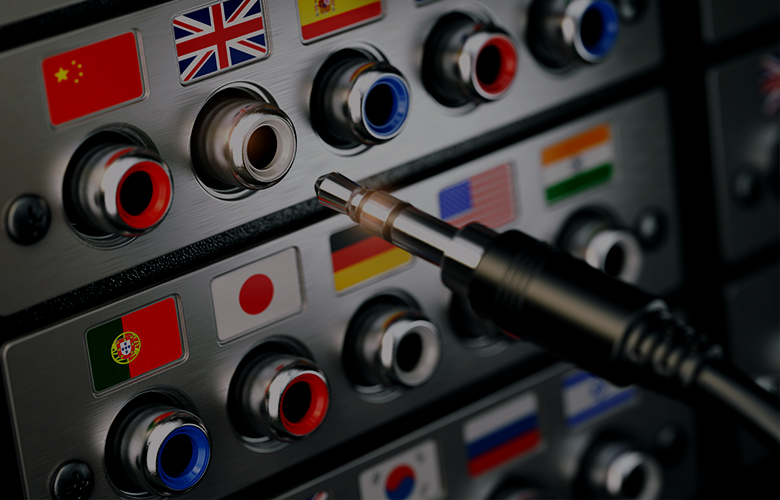
Lingua Franca — “A language that is adopted as a common language between speakers whose native languages are different”
While working as senior technical supervisor on the construction of The House of Dancing Water in Macau, China, just 40 miles west of Hong Kong, whenever I attended a meeting where my counterparts would be speaking mostly in Cantonese, or a few in Mandarin, I would bring a stack of scrap paper and a handful of colored pens. Although the engineers, construction managers and creative team all spoke different native languages, the common ground were drawings — everyone could read blueprints and sketches.
Putting 11 hydraulic lifts in a 3.6 million gallon swimming pool is still a new technology, even though it had been done a couple of times before, in increasingly complex versions, by the same creative producer. As an English speaker only, the question was how to problem solve and communicate across two languages about so demanding a topic?
In a meeting of 12 engineers, architects and project managers, the conversation would often devolve into multiple, separate conversations proceeding animatedly in Cantonese, as people would grapple with the topics at hand.
This could go on for 15 to 20 minutes. Occasionally, one of the bilingual engineers would switch back to English to catch me up on what was going on.
In another color, I would sketch one possible solution.
That would often spark a grab for more colored pens as the problem solving focused on the piece of paper, and transformed into different colored sketches to suggest different solutions. This visual/graphic “conversation” unfolded over just a few minutes, longer if there were more iterations needed. We bypassed long, multiple, overlapping verbal conversations requiring extended verbal translation and got to the heart of the matter. There was a good sense of moving forward and getting the work done.
We discovered that equipment models, times of day and units of measure were universally recognizable using English letters and Arabic numbers (i.e., 1, 2, 3, etc.), so a fair amount of detail could be readily shared back and forth.
*****************
On another similar, complex swimming pool theatre project in China, a larger application of this visual and graphic approach evolved in order to tackle complex scheduling meetings.
There were six major zones in the cavernous auditorium and performance area that required work in these multiple areas to proceed simultaneously, without conflict. Work often continued on a 24-hour cycle, as the project approached final deadline.
Many tasks required specific working conditions (Wet Lifts at -1 meters, and Swing Seats in the Open position). The scheduling group had to sort out which teams could work without conflict at the same time in the auditorium and performance area.
Because of the verbal one-person/one-idea-at-a-time format, there was no easy way to connect the multiple pieces of this complex puzzle together as a whole.
We tried a more graphically based approach by capturing the information visually and sharing it in real time, with minimal verbal interpreting required. We set up three wall-sized white boards in the conference room, gridded out to show the six work zones across the top plus a column for Notes and another for Stakeholder (i.e., which team needed to do the work), in both English and Chinese. Time slots were written running down the left hand side of the grid.
The grid immediately showed obvious conflicts where Tasks 1 and 2 could not occupy the same place at the same time — but could work if we delayed Task 2 by four hours once Task 1 was complete. It also showed us that Task 5 could be moved up to the morning since, there were no projects competing for the specified space, and its physical pre-requisites did not conflict with anyone else’s work at that time.
As the information appeared in real time on the board, spirited negotiations between vendors and coordinators would sometimes break out about how best to meet everyone’s specific needs. There was a clearer understanding by all parties on how their task fit into the larger picture. Absolute deadlines about when specific tasks needed to be complete were included in the whiteboard schedule.
Once the scheduling grid was complete, everyone took a snapshot of the two white board grids on their way out the door. Everyone now had an understanding of the next day’s schedule and were ready to go.
Scheduling efficiency dramatically increased. Total time condensed from two hours in the old verbal translation style to about 20 – 30 minutes using the white board grid. As upcoming tasks became more elaborate, we were able to schedule up to three days in advance, in about an hour’s time.
Communication became more fluid and responsive. Tackling the big challenges ahead of us became more manageable.
Also by Dawn Chiang:
Want To Perform In The USA? Here’s How To Get A Visa Now


Dawn Chiang designed the lighting on Broadway for “Zoot Suit”, was co-designer for “Tango Pasion”, and associate lighting designer for “Show Boat”, “The Life” and the original Broadway production of “La Cage Aux Folles”. Dawn was resident lighting designer for New York City Opera. She worked on the concert tours of Paul Anka, The Carpenters, Diana Ross, and Loggins and Messina. She has designed the lighting at numerous regional theaters including Arena Stage, Oregon Shakespeare Festival, Denver Center Theatre Company, Guthrie Theater, Alliance Theatre, and the Mark Taper Forum. Dawn has earned two Drama-Logue Critics' Awards, two Lighting Designer of the Year Awards (Syracuse Area Live Theatre), and nominations for the San Francisco Drama Critics’ Award, Los Angeles Drama Critics’ Award and the Hewes Design Award from American Theatre Wing. She served on the board of directors for Theatre Communications Group, the national service organization for professional non-profit American theatres, and is a mentor for the Theater Development Fund’s “Open Doors” outreach program. Dawn is a senior consultant with Theatre Projects Consultants, where she served as project manager for two of the largest water based permanent shows — “House of Dancing Water” in Macau and the Han Theatre in central China.
Read Full Profile© 2021 TheatreArtLife. All rights reserved.

Thank you so much for reading, but you have now reached your free article limit for this month.
Our contributors are currently writing more articles for you to enjoy.
To keep reading, all you have to do is become a subscriber and then you can read unlimited articles anytime.
Your investment will help us continue to ignite connections across the globe in live entertainment and build this community for industry professionals.